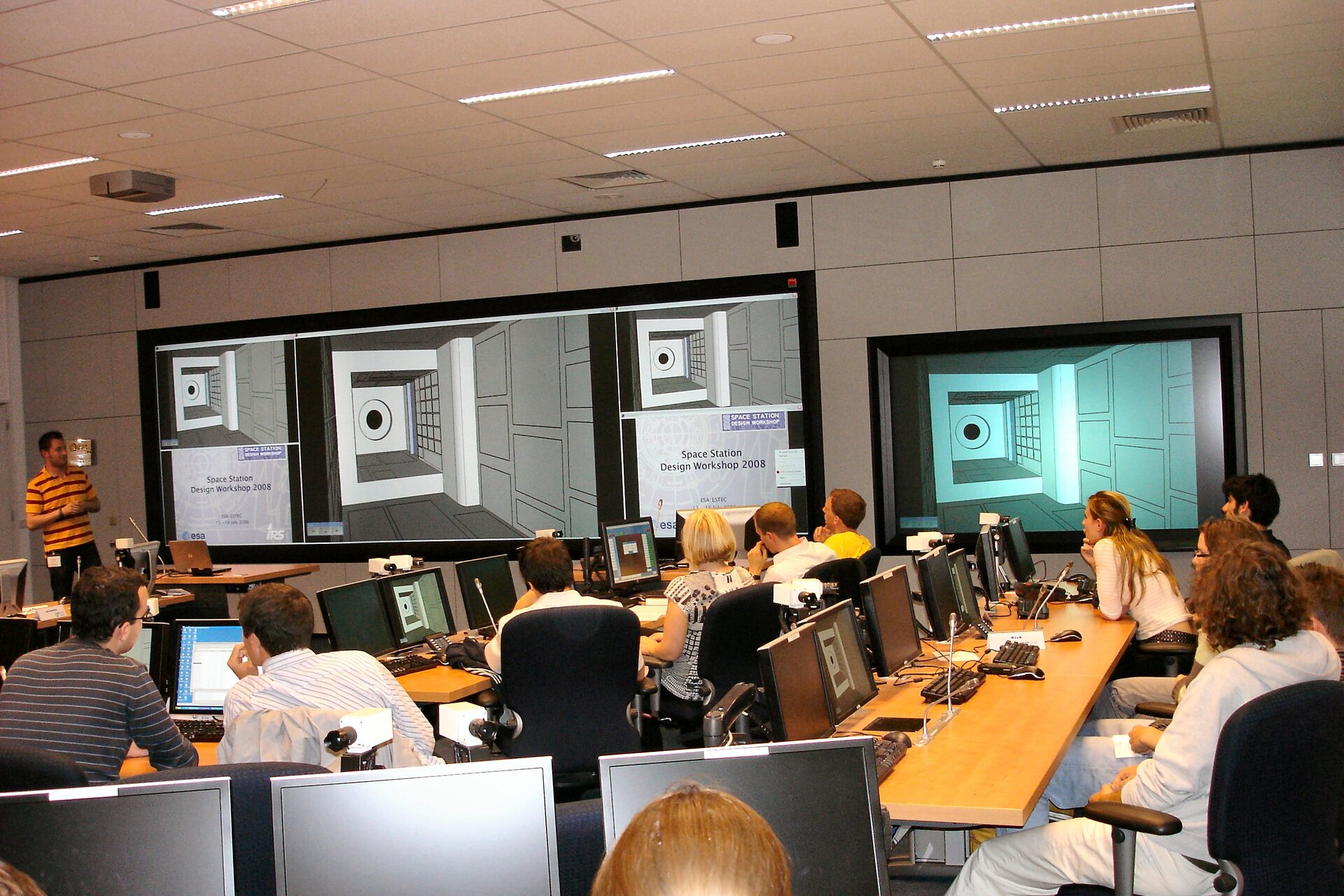CDF and education
ESA’s Concurrent Design Facility (CDF) is built to facilitate collaborative working and knowledge exchange. Intended for mission engineering, it has also proved a valuable resource for education in collaboration with universities, academia and ESA’s Education Office.
The CDF plays a central role in ESA’s Student Space Exploration and Technology Initiative (SSETI). Organised by ESA’s Education Office, SSETI encourages undergraduate students to learn more about space engineering by developing small satellites. In the same way that full-size spacecraft are assembled by far-flung industrial consortiums, SSETI teams from all over Europe collaborate remotely: each institution or team is given a specific subsystem to work on, coordinating their progress via online means.
The CDF hosts regular workshops for SSETI missions, enabling face-to-face meetings and reviews of the work done so far. Its network facilities allow team members of various disciplines to interact together in real time while also receiving advice from ESA experts. Various mission factors can be analysed in conjunction, from structural and mass considerations to subsystem compatibility, instrument selection, communication solutions, even project planning and cost projection.
With the help of the CDF, SSETI has built and flown two missions so far: SSETI Express and the Young Engineers Satellite-2 (YES2), respectively launched in October 2005 and September 2007. Other missions are currently in development: the European Student Earth Orbiter (ESEO), the European Student Moon Orbiter (ESMO) and the multiple-spacecraft SSETI Swarm.
In addition the CDF has hosted workshops on designing Cubesats – standardised 1kg-class satellites which give schools, universities and small firms a low-cost opportunity to build and fly hardware into orbit.
The CDF in collaboration with the ESA Internal University holds two System Engineering courses per year to enable domain specialists to understand the interdisciplinary relations to get an insight into the problems associated with system design and to enable them to act as systems engineers within the CDF environment.
The facility is also employed to familiarise engineering teams from new ESA partners and cooperating states with mission design and Agency standards and practices.




